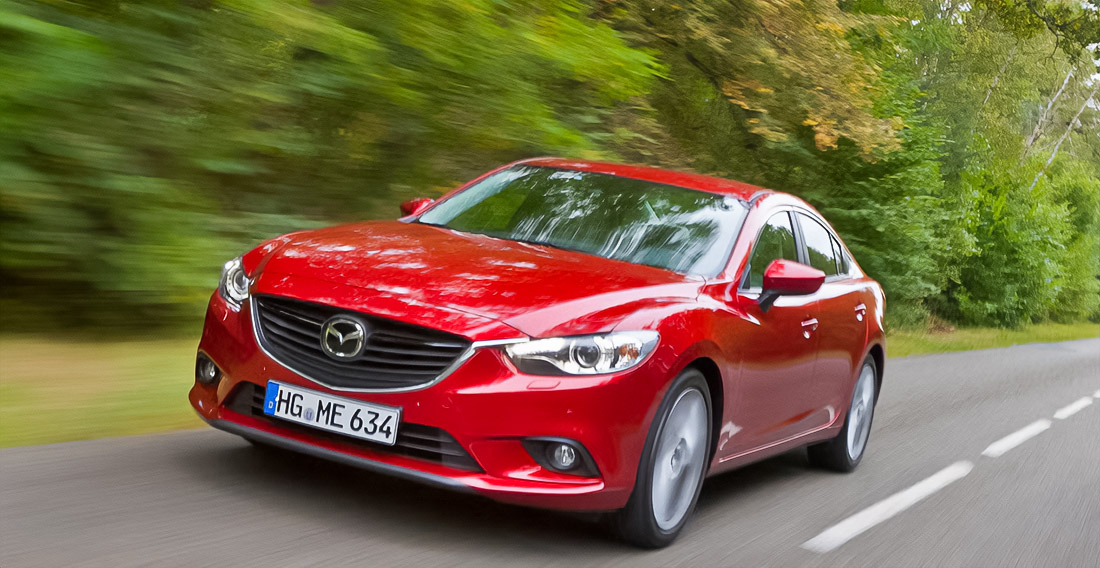Mazda’s automotive design is based on deep Japanese philosophical approaches: minimalism, zen and human-centered design. These principles are evident in every element of the brand’s models, from the streamlined body lines to the ergonomics of the interior and zero-gravity seats.
One of the most important terms defining Mazda’s philosophy is jinba-ittai, meaning “the unity of driver and car.” This concept originated in the late 1980s, when engineers sought to create a feeling of complete fusion with the machine. As a result, modern models, including sports versions with 3.8L Twin-Turbo V6 and 3.0L Inline-6 Turbocharged engines, have well-thought-out weight distribution, torque vector control and suspension adjustment, which reduces body micro-movements and reduces the need for frequent steering adjustments.
Minimalism and ergonomics are evident in the organization of the space and the control panel. Mazda pays attention to interior space management based on the concept of the harmony of emptiness and fullness. This philosophy creates a feeling of lightness and peace. The models use organic shapes and kanso principles, which is reflected in the minimalistic design of the dashboard with two 12.3-inch displays and the absence of visual noise.
The Mazda interior is made using lightweight materials: aluminum and carbon fiber. These materials help reduce vehicle weight and increase maneuverability while maintaining stability at high speed. For example, the use of carbon fiber in individual interior elements ensures not only lightness, but also structural strength.
An important part of the philosophy is omotenashi– deep attention to the comfort of the driver and passengers. Ergonomics are thought out to the smallest detail: from the organic type of accelerator pedal to the seat settings that allow you to maintain a natural posture. All controls are located in the maximum accessibility area and support intuitive interaction.
The Japanese shibui tradition emphasizes a calm, restrained beauty that does not get boring with time. This approach is particularly evident in the laconic body lines and simple but noble interior trim elements. The color solutions are developed taking into account the concept of zen and organic perception. For example, the interior uses a combination of calm shades with accents inspired by nature.
An important aspect of Mazda’s design is sustainability and concern for the environment. The company has developed biodegradable plastics for interior decoration, which reduces CO2 emissions during production. In addition, a three-layer paint system is used, which simultaneously reduces the amount of volatile organic compounds and reduces the carbon footprint. These innovations are already implemented in production vehicles available if you plan to buy Mazda in Dubai.
Aerodynamics and minimalism form the recognizable appearance of the models. The iki concept, which means expressive novelty and conciseness, is noticeable in the smooth lines of the body and the protective sensor panel. Streamlined shapes, active spoilers and lower diffusers reduce air resistance and create additional downforce, which is especially important for sports cars such as models with the 1.3L Twin-Rotor Rotary Engine.
The interior of the Mazda uses elements of kumiko, a Japanese ornament that decorates the panels and lighting elements. The soft lighting, inspired by the concept of andon (paper lanterns), creates an atmosphere of tranquility and enhances the feeling of comfort. At the same time, the interior retains simplicity and clarity, the principles characteristic of the philosophy of kanso.
The company also uses shih-ka-ke methods aimed at shaping positive driver behavior. For example, the ergonomics of the interior and the intuitive layout of the controls reduce the load and help you focus on the road, while intuitive feedback functions create a sense of predictability and confidence.
Mazda pays attention to a human-centered approach, which is evident not only in ergonomics, but also in general design principles. Ease of operation, natural pedal movements, reduction of visual overload and the use of intuitive interfaces — all this forms a holistic perception of the car as an extension of the driver.
For buyers in the UAE, Mazda cars are becoming a choice that combines high performance, minimalist aesthetics and technology based on a deep philosophy of Japanese design. These are cars in which every element, from aerodynamics to the location of buttons, is subordinated to the idea of creating a harmonious and comfortable space, where not only power figures are important, but also an emotional connection with the car. If you’re searching for a model that balances elegance and thoughtful engineering, consider exploring options to buy ‘Mazda Dubai’ and experience how true Japanese design philosophy feels behind the wheel.

Cyclist, doer, hiphop head, Vignelli fan and storyteller. Operating at the junction of modernism and programing to create strong, lasting and remarkable design. I sometimes make random things with friends.
